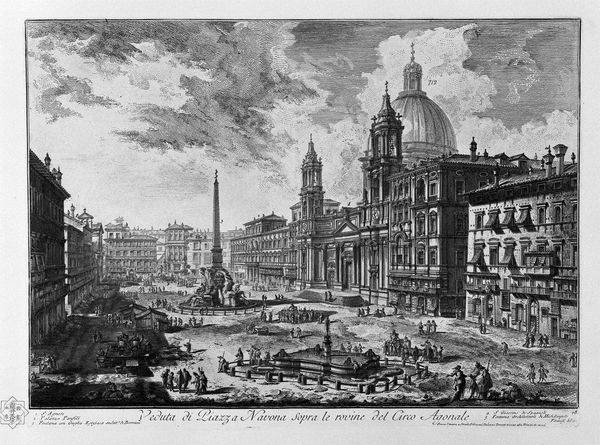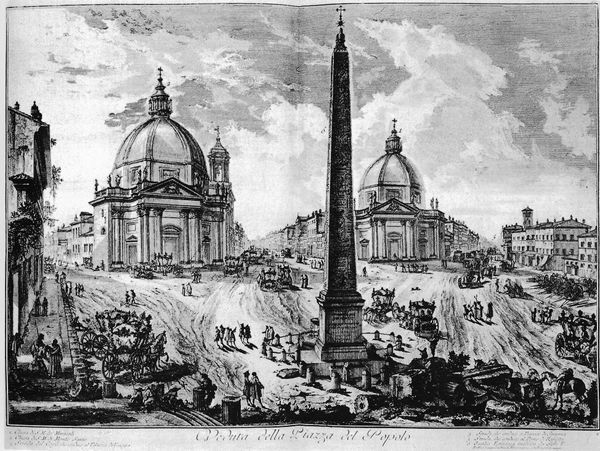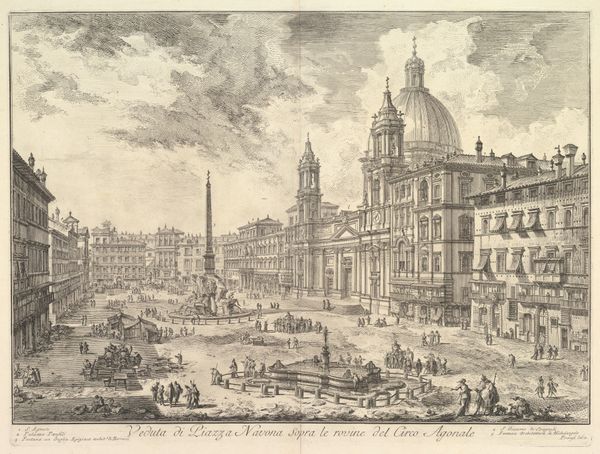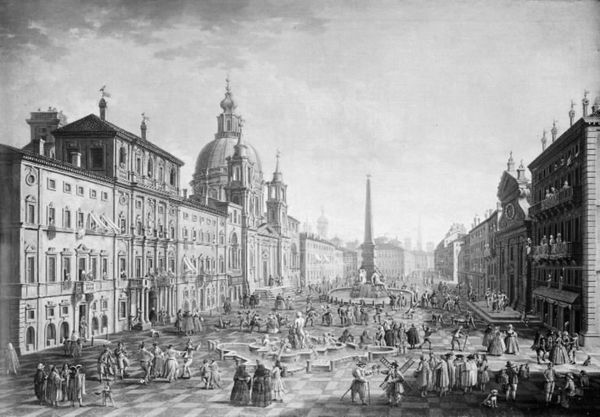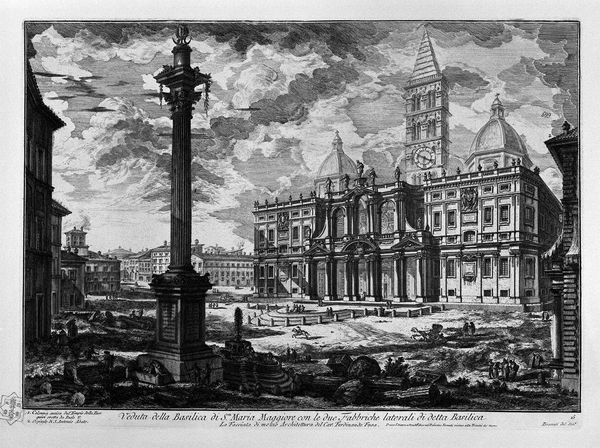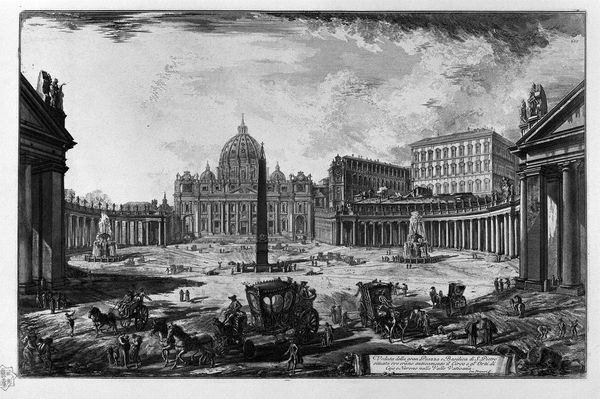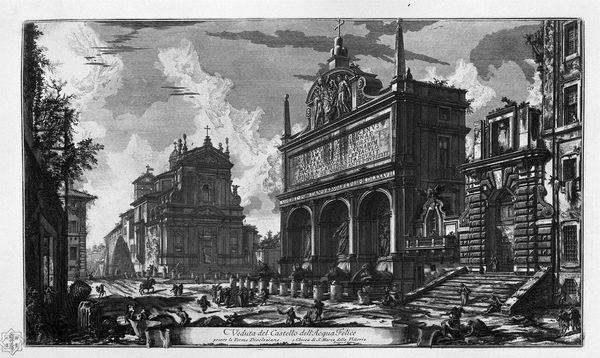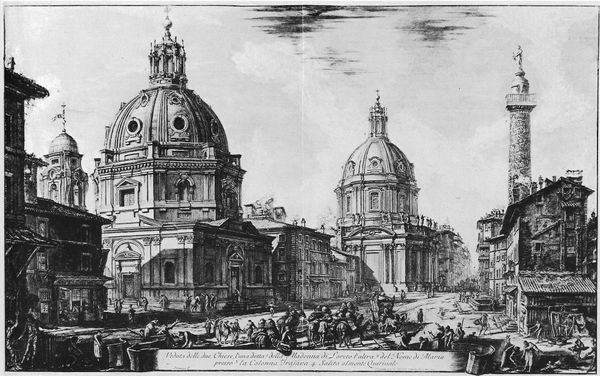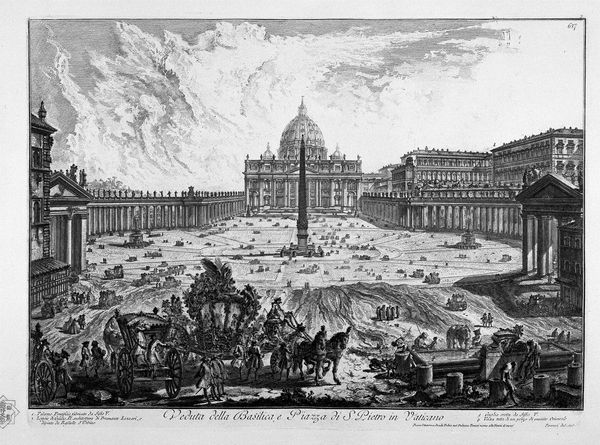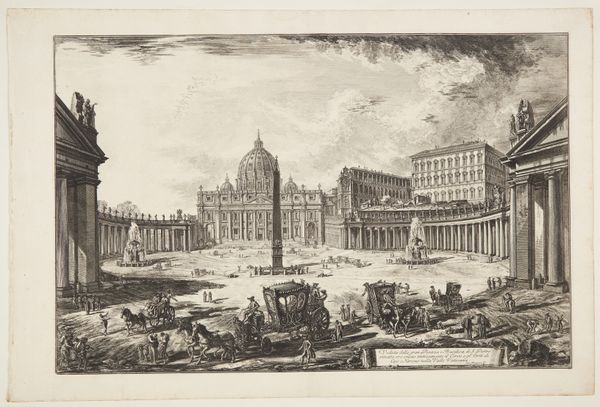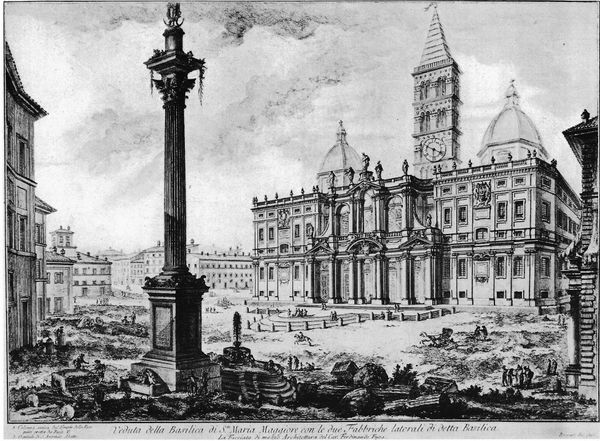
drawing, print, etching, ink, architecture
#
pen and ink
#
architectural sketch
#
landscape illustration sketch
#
drawing
#
baroque
# print
#
etching
#
landscape
#
ink
#
pen-ink sketch
#
pen work
#
architecture drawing
#
cityscape
#
architecture
Copyright: Public domain
Curator: This is one of Giovanni Battista Piranesi's *Vedute di Roma*, or "Views of Rome," a series of etchings he produced, though we don’t have a specific date for this particular piece. Editor: Right, a black and white print of a bustling cityscape, probably Rome's Piazza Navona. The detail is incredible. So many tiny figures! It’s like a stage set. What do you see here? Curator: The making of these prints fascinates me. Piranesi was, in essence, mass-producing ‘views’ for consumption, leveraging the labor of his workshop. Look at the uniformity in the figures. Notice the deliberate use of perspective creating an imposing scale for these buildings. These weren't just neutral depictions; they were commodities shaping a vision of Rome for a growing tourist market. How does the manipulation of materials contribute to its message? Editor: That's interesting. It makes me think about the intended audience. Tourists buying these prints as souvenirs – little pieces of Rome they could take home. Does the etching process allow for subtle variations in each print run, creating slightly different “authentic” experiences? Curator: Precisely! The commodification of the artistic process, combined with the allure of originality through subtle variation, reveals the tension between art and commerce, hand-made and mass-produced. Each print becomes an instantiation of Roman grandeur consumed as a commodity. The *means* of production *is* part of the art, influencing the viewers perception, isn't it? Editor: It totally changes how I see it! Not just a pretty picture, but a carefully crafted product of its time. I learned something today! Curator: Indeed, viewing it through the lens of its materiality exposes an entirely new layer. Thanks for helping to open this up!
Comments
No comments
Be the first to comment and join the conversation on the ultimate creative platform.
